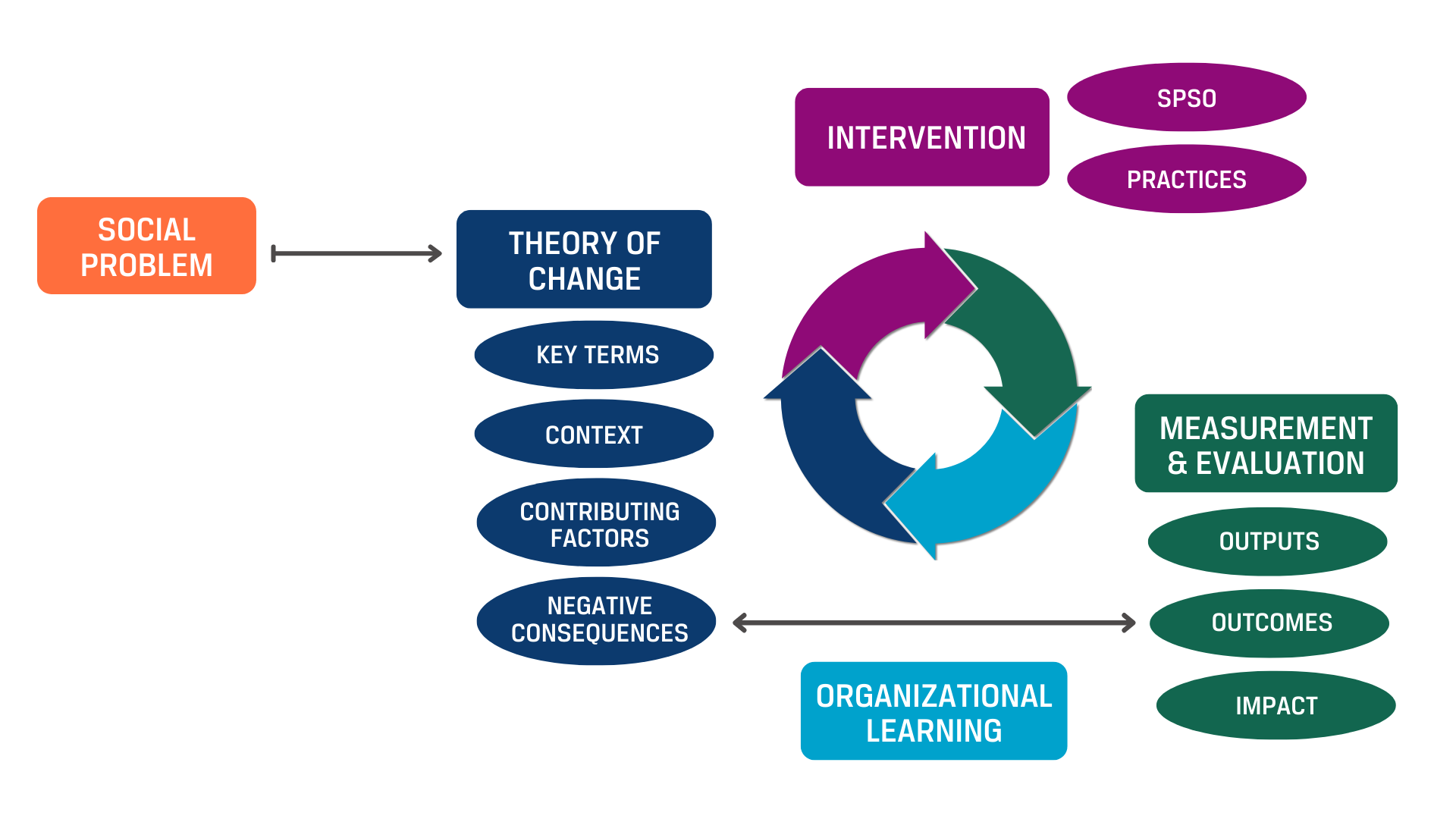What is the social impact cycle?
The social impact cycle is a continuous, virtuous cycle that if followed will lead an organization in creating better interventions that solve the negative consequences of the social problem better. This process takes much of the guesswork out of making a real impact through measurement, organizational learning, and evolving theories of change.
The cycle begins with a social problem. Social problems are conditions or behaviors in society that disrupt or damage many people within society. At the Ballard Social Impact Center, we believe in loving the problem, not the solution. This means that we spend time deepening our understanding of the problem by recognizing the context, contributing factors, and negative consequences.
This understanding lays the groundwork for a theory of change. In its simplest form, a theory of change is an if-then statement that captures a belief about what may solve a social problem. For example, if we provide means to purify the water in rural Tanzania, fewer Tanzanians will suffer from fatal dehydration.
An intervention is a practice that exists to solve a social problem, or an action taken to test a theory of change. In the example given above, this would be the point where we go to Tanzania and install water purifiers at critical points in the communities most affected.
Next, we will move to the measurement stage to assess the effectiveness of the intervention. Ballard students approach measurement in three ways: outputs, outcomes, and impact. Outputs are the means that an organization works on because it believes they will cause the outcomes to occur. Outcomes are measurements of the negative consequences of the social problem getting better (or getting worse) in the customers' lives. Impact is the percentage that the practices/outputs cause the outcomes to occur.
Good measurement leads to organizational learning. At this point in the cycle, an organization is able to use the information gathered from its outputs, outcomes, and impact to improve its intervention and revitalize its theory of change. This process repeats until a social problem has been solved.
The Ballard Social Impact Center believes that this model is the best approach to solving social problems. Social Impact Projects (SIP) students are taught about the social impact cycle so they are prepared to add value to an organization at any stage.

